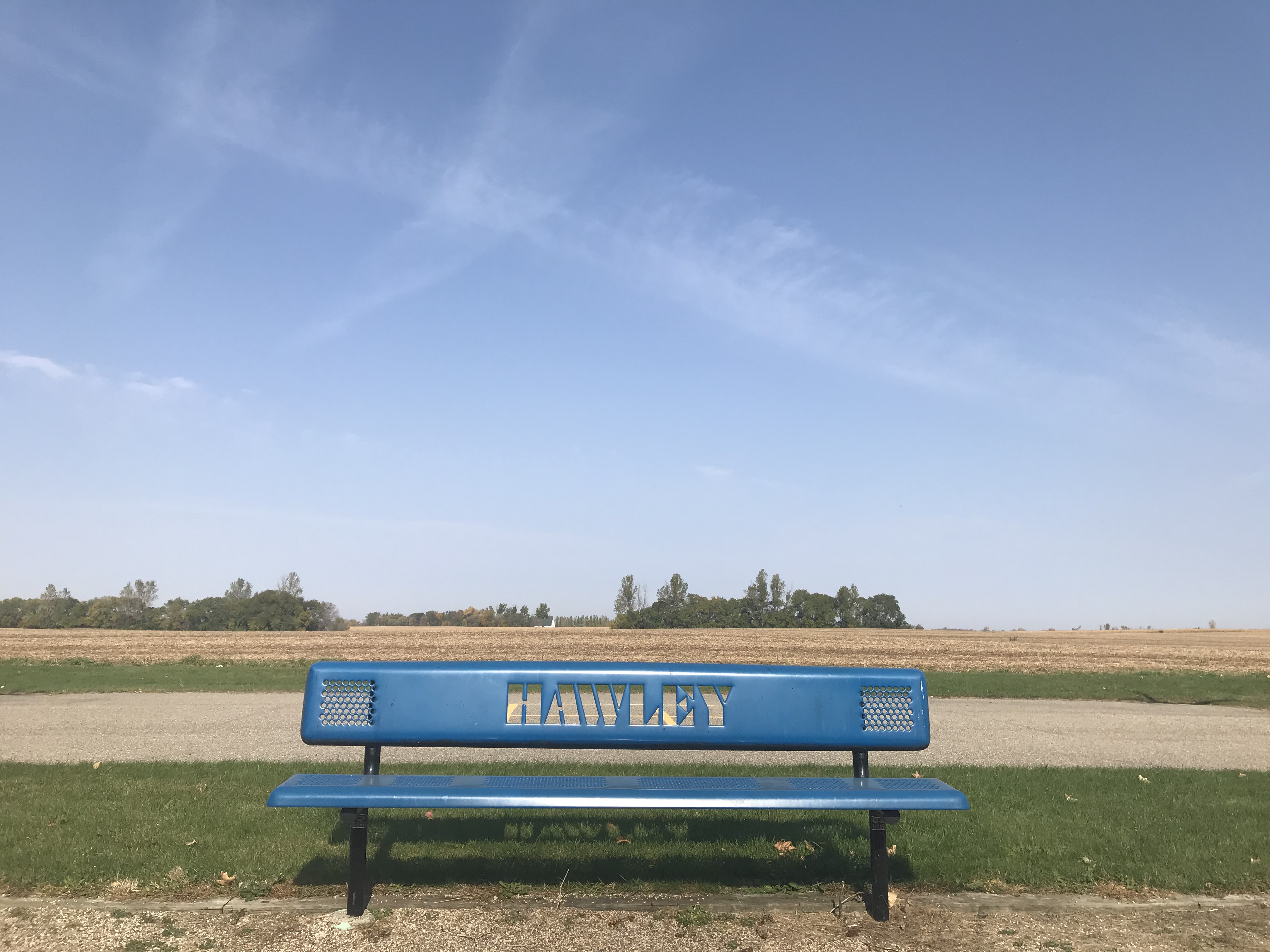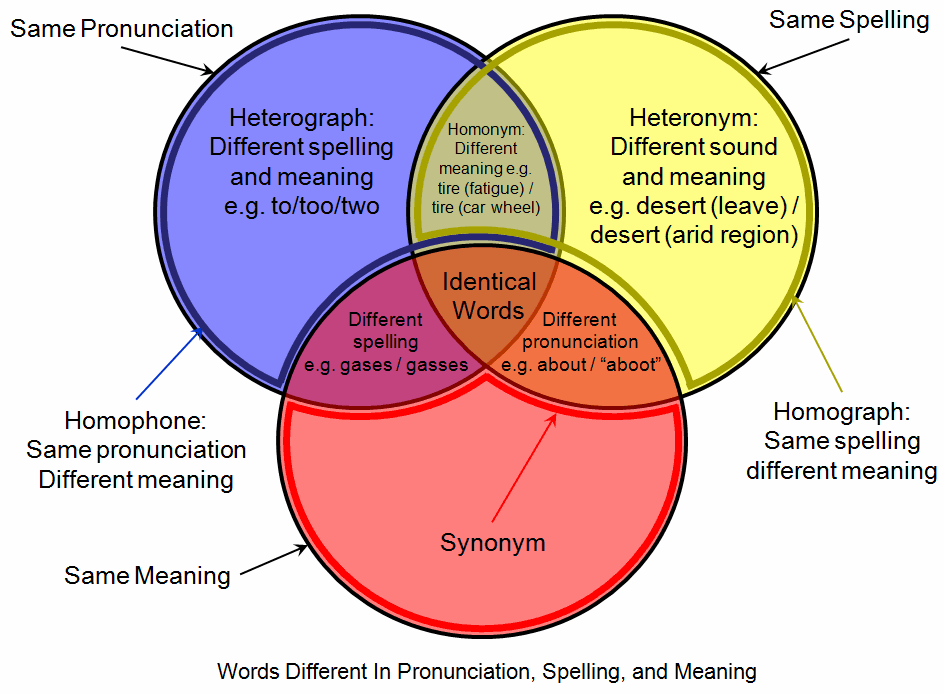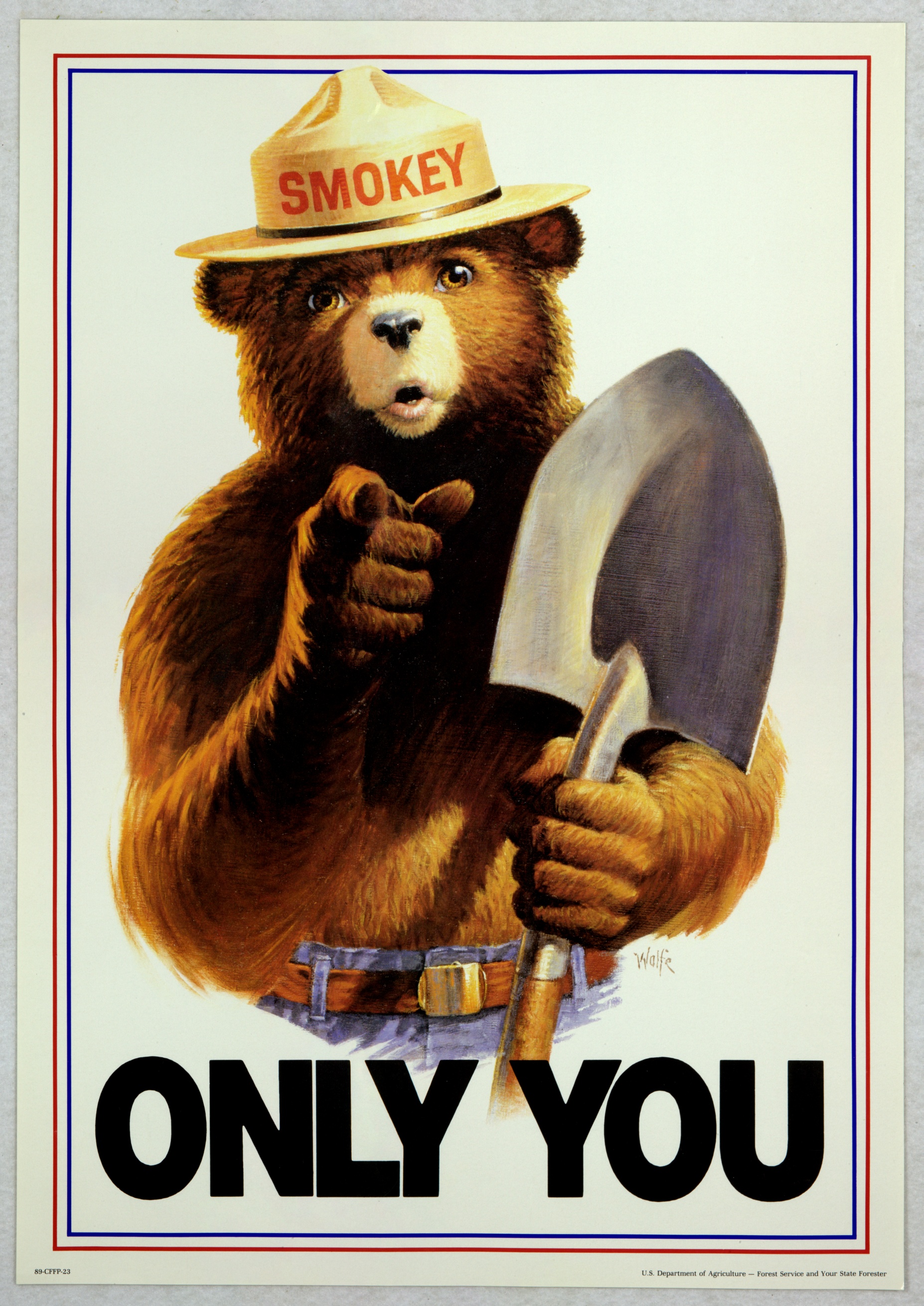|
Hawley, Minnesota
Hawley is a town in Clay County, Minnesota, United States, along the Buffalo River. The population was 2,219 at the 2020 census. The town went through six quick name changes after 1871 until, in 1872, it was finally named after Thomas Hawley Canfield, an officer in the Northern Pacific Railway, which laid out the town. General Custer visited the town in 1876. The incident was recalled in a short film entitled Incident at Hawley by WCCO Television in Minneapolis that aired during America's bicentennial year of 1976. In 2007, the town started an ad campaign called "Hawley Would" (a homophonic play on words of "Hollywood"). The campaign focuses on both the small-town atmosphere of Hawley and its proximity to the Fargo-Moorhead metropolitan area; Hawley is 22 miles from downtown Fargo. Hawley was at one time settled by a colony of immigrants from Yeovil, Somerset; among these was Elisabeth Chant, later to become a painter in Minneapolis. Geography Hawley is east of Moorhea ... [...More Info...] [...Related Items...] OR: [Wikipedia] [Google] [Baidu] |
City
A city is a human settlement of notable size.Goodall, B. (1987) ''The Penguin Dictionary of Human Geography''. London: Penguin.Kuper, A. and Kuper, J., eds (1996) ''The Social Science Encyclopedia''. 2nd edition. London: Routledge. It can be defined as a permanent and densely settled place with administratively defined boundaries whose members work primarily on non-agricultural tasks. Cities generally have extensive systems for housing, transportation, sanitation, utilities, land use, production of goods, and communication. Their density facilitates interaction between people, government organisations and businesses, sometimes benefiting different parties in the process, such as improving efficiency of goods and service distribution. Historically, city-dwellers have been a small proportion of humanity overall, but following two centuries of unprecedented and rapid urbanization, more than half of the world population now lives in cities, which has had profound consequ ... [...More Info...] [...Related Items...] OR: [Wikipedia] [Google] [Baidu] |
General Custer
George Armstrong Custer (December 5, 1839 – June 25, 1876) was a United States Army officer and cavalry commander in the American Civil War and the American Indian Wars. Custer graduated from West Point in 1861 at the bottom of his class, but as the Civil War was just starting, trained officers were in immediate demand. He worked closely with General George B. McClellan and the future General Alfred Pleasonton, both of whom recognized his qualities as a cavalry leader, and he was promoted to brigadier general of volunteers at age 23. Only a few days after his promotion, he fought at the Battle of Gettysburg, where he commanded the Michigan Cavalry Brigade and despite being outnumbered, defeated J. E. B. Stuart's attack at what is now known as the East Cavalry Field. In 1864, he served in the Overland Campaign and in Philip Sheridan's army in the Shenandoah Valley, defeating Jubal Early at Cedar Creek. His division blocked the Army of Northern Virginia's final retreat and ... [...More Info...] [...Related Items...] OR: [Wikipedia] [Google] [Baidu] |
Elisabeth Chant
Elisabeth Augusta Chant (March 10, 1865 – September 21, 1947) was an American painter and teacher, noted especially for her landscapes. Early life and education Born in Yeovil, Somerset, Chant was the daughter of James Chant, a merchant captain involved in the Asian spice trade, and Elizabeth Rowe Wills; she was one of nine children. She claimed that before she was seven she had sailed the world as one of her father's passengers. With her family she immigrated to the United States in 1873, settling in Hawley, Minnesota, with numerous other Yeovil residents; upon her mother's death, her father moved the family to Minneapolis and opened a market. She early displayed a taste for art, but was encouraged to turn her talents elsewhere, so she enrolled in the Training School for Nurses at Northwestern Hospital for Women and Children and graduated in 1886. Nursing and art She continued taking art lessons, studying with Douglas Volk between 1890 and 1893 and receiving instructions in the ... [...More Info...] [...Related Items...] OR: [Wikipedia] [Google] [Baidu] |
Somerset
( en, All The People of Somerset) , locator_map = , coordinates = , region = South West England , established_date = Ancient , established_by = , preceded_by = , origin = , lord_lieutenant_office =Lord Lieutenant of Somerset , lord_lieutenant_name = Mohammed Saddiq , high_sheriff_office =High Sheriff of Somerset , high_sheriff_name = Mrs Mary-Clare Rodwell (2020–21) , area_total_km2 = 4171 , area_total_rank = 7th , ethnicity = 98.5% White , county_council = , unitary_council = , government = , joint_committees = , admin_hq = Taunton , area_council_km2 = 3451 , area_council_rank = 10th , iso_code = GB-SOM , ons_code = 40 , gss_code = , nuts_code = UKK23 , districts_map = , districts_list = County council area: , MPs = * Rebecca Pow (C) * Wera Hobhouse ( LD) * Liam Fox (C) * David Warburton (C) * Marcus Fysh (C) * Ian Liddell-Grainger (C) * James Heappey (C) * Jacob Rees-Mogg (C) * John Penrose (C) , police = Avon and Somerset Polic ... [...More Info...] [...Related Items...] OR: [Wikipedia] [Google] [Baidu] |
Yeovil
Yeovil ( ) is a town and civil parish in the district of South Somerset, England. The population of Yeovil at the last census (2011) was 45,784. More recent estimates show a population of 48,564. It is close to Somerset's southern border with Dorset, from London, south of Bristol, from Sherborne and from Taunton. The aircraft and defence industries which developed in the 20th century made it a target for bombing in the Second World War; they are still major employers. Yeovil Country Park, which includes Ninesprings, is one of several open spaces with educational, cultural and sporting facilities. Religious sites include the 14th-century Church of St John the Baptist. The town is on the A30 and A37 roads and has two railway stations. History Archaeological surveys have yielded Palaeolithic burial and settlement sites mainly to the south of the modern town, particularly in Hendford, where a Bronze Age golden torc (twisted collar) was found. Yeovil is on the main Roman roa ... [...More Info...] [...Related Items...] OR: [Wikipedia] [Google] [Baidu] |
Fargo, North Dakota
Fargo ( /ˈfɑɹɡoʊ/) is a city in and the county seat of Cass County, North Dakota, United States. According to the 2020 census, its population was 125,990, making it the most populous city in the state and the 219th-most populous city in the United States. Fargo, along with its twin city of Moorhead, Minnesota, and the adjacent cities of West Fargo, North Dakota and Dilworth, Minnesota, form the core of the Fargo, ND – Moorhead, MN Metropolitan Statistical Area. The MSA had a population of 248,591 in 2020. Fargo was founded in 1871 on the Red River of the North floodplain. It is a cultural, retail, health care, educational, and industrial center for southeastern North Dakota and northwestern Minnesota. North Dakota State University is located in the city. History Early history Historically part of Sioux (Dakota people, Dakota) territory, the area that is present-day Fargo was an early stopping point for steamboats traversing the Red River of the North, Red Rive ... [...More Info...] [...Related Items...] OR: [Wikipedia] [Google] [Baidu] |
Metropolitan Area
A metropolitan area or metro is a region that consists of a densely populated urban area, urban agglomeration and its surrounding territories sharing Industry (economics), industries, commercial areas, Transport infrastructure, transport network, infrastructures and housing. A metro area usually comprises multiple Principal city, principal cities, jurisdictions and Municipality, municipalities: Neighbourhood, neighborhoods, townships, boroughs, City, cities, towns, exurbs, suburbs, County, counties, districts, as well as even State (polity), states and nations like the eurodistricts. As social, economic and political institutions have changed, metropolitan areas have become key economic and political regions. Metropolitan areas typically include Satellite city, satellite cities, towns and intervening rural areas that are socioeconomically tied to the Principal city, principal cities or urban core, often measured by commuting patterns. Metropolitan areas are sometimes anchored ... [...More Info...] [...Related Items...] OR: [Wikipedia] [Google] [Baidu] |
Hollywood (film Industry)
The cinema of the United States, consisting mainly of major film studios (also known as Hollywood) along with some independent film, has had a large effect on the film industry, global film industry since the early 20th century. The dominant style of American cinema is classical Hollywood cinema, which developed from 1913 to 1969 and is still typical of most films made there to this day. While Frenchmen Auguste and Louis Lumière are generally credited with the birth of modern cinema, American cinema soon came to be a dominant force in the emerging industry. , it produced the third-largest number of films of any national cinema, after India and China, with more than 600 English-language films released on average every year. While the national cinemas of the Cinema of the United Kingdom, United Kingdom, Cinema of Canada, Canada, Cinema of Australia, Australia, and Cinema of New Zealand, New Zealand also produce films in the same language, they are not part of the Hollywood sys ... [...More Info...] [...Related Items...] OR: [Wikipedia] [Google] [Baidu] |
Word Play
Word play or wordplay (also: play-on-words) is a literary technique and a form of wit in which words used become the main subject of the work, primarily for the purpose of intended effect or amusement. Examples of word play include puns, phonetic mix-ups such as spoonerisms, obscure words and meanings, clever rhetorical excursions, oddly formed sentences, double entendres, and telling character names (such as in the play '' The Importance of Being Earnest'', ''Ernest'' being a given name that sounds exactly like the adjective ''earnest''). Word play is quite common in oral cultures as a method of reinforcing meaning. Examples of text-based ( orthographic) word play are found in languages with or without alphabet-based scripts, such as homophonic puns in Mandarin Chinese. Techniques Some techniques often used in word play include interpreting idioms literally and creating contradictions and redundancies, as in Tom Swifties: :"Hurry up and get to the back of the ship, ... [...More Info...] [...Related Items...] OR: [Wikipedia] [Google] [Baidu] |
Homophone
A homophone () is a word that is pronounced the same (to varying extent) as another word but differs in meaning. A ''homophone'' may also differ in spelling. The two words may be spelled the same, for example ''rose'' (flower) and ''rose'' (past tense of "rise"), or spelled differently, as in ''rain'', ''reign'', and ''rein''. The term ''homophone'' may also apply to units longer or shorter than words, for example a phrase, letter, or groups of letters which are pronounced the same as another phrase, letter, or group of letters. Any unit with this property is said to be ''homophonous'' (). Homophones that are spelled the same are also both homographs and homonyms, e.g. the word ''read'', as in "He is well ''read''" (he is very learned) vs. the sentence "I ''read'' that book" (I have finished reading that book). Homophones that are spelled differently are also called heterographs, e.g. ''to'', ''too'', and ''two''. Etymology "Homophone" derives from Greek ''homo-'' (ὁμο� ... [...More Info...] [...Related Items...] OR: [Wikipedia] [Google] [Baidu] |
Advertising Campaign
An advertising campaign is a series of advertisement Advertising is the practice and techniques employed to bring attention to a product or service. Advertising aims to put a product or service in the spotlight in hopes of drawing it attention from consumers. It is typically used to promote a ... messages that share a single idea and theme which make up an marketing strategy, integrated marketing marketing communications, communication (IMC). An IMC is a platform in which a group of people can group their ideas, beliefs, and concepts into one large media base. Advertising campaigns utilize diverse media channels over a particular time frame and target identified audiences. The campaign theme is the central message that will be received in the promotional activities and is the prime focus of the advertising campaign, as it sets the motif for the series of individual advertisements and other marketing communications that will be used. The campaign themes are usually produce ... [...More Info...] [...Related Items...] OR: [Wikipedia] [Google] [Baidu] |






